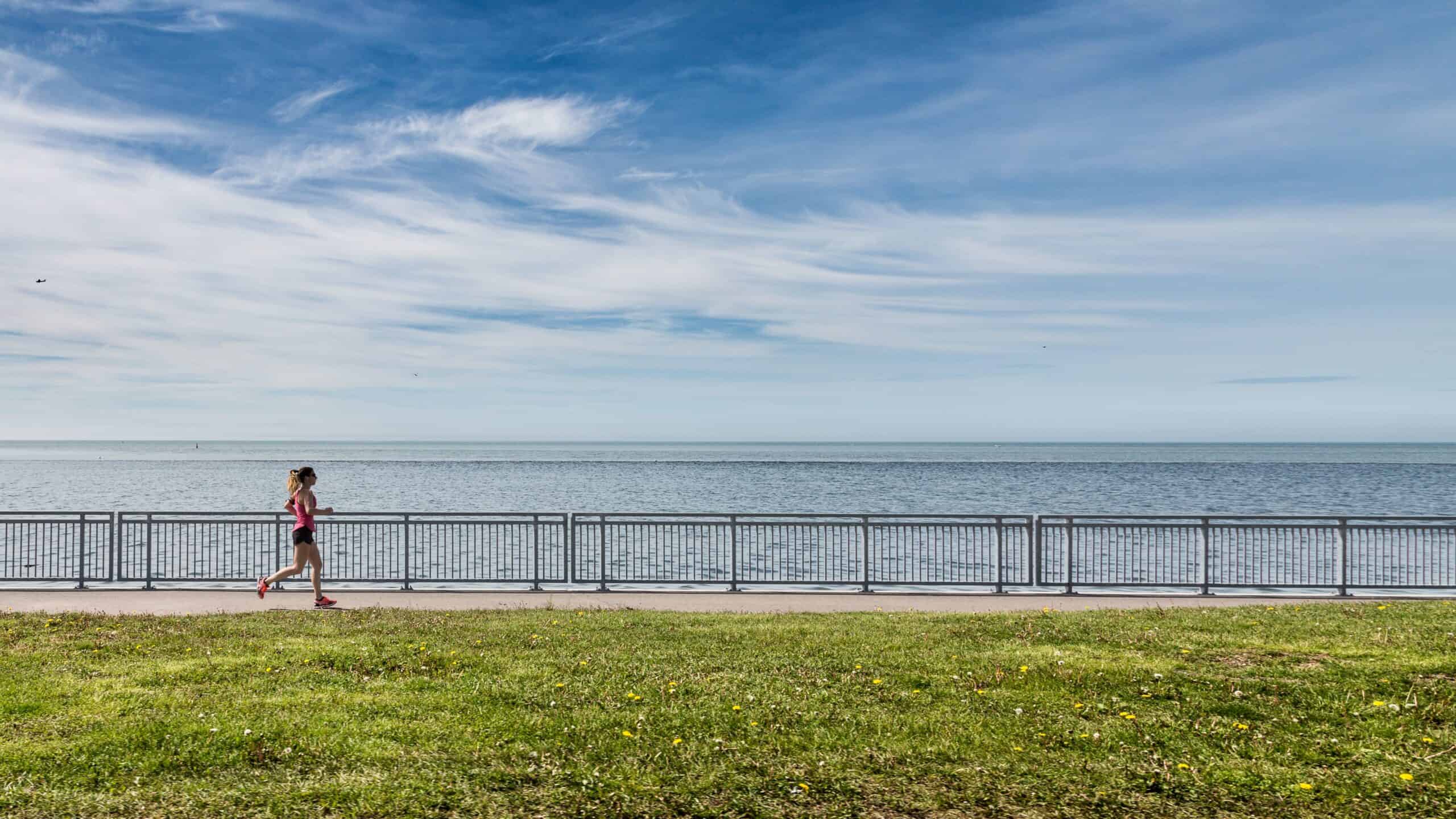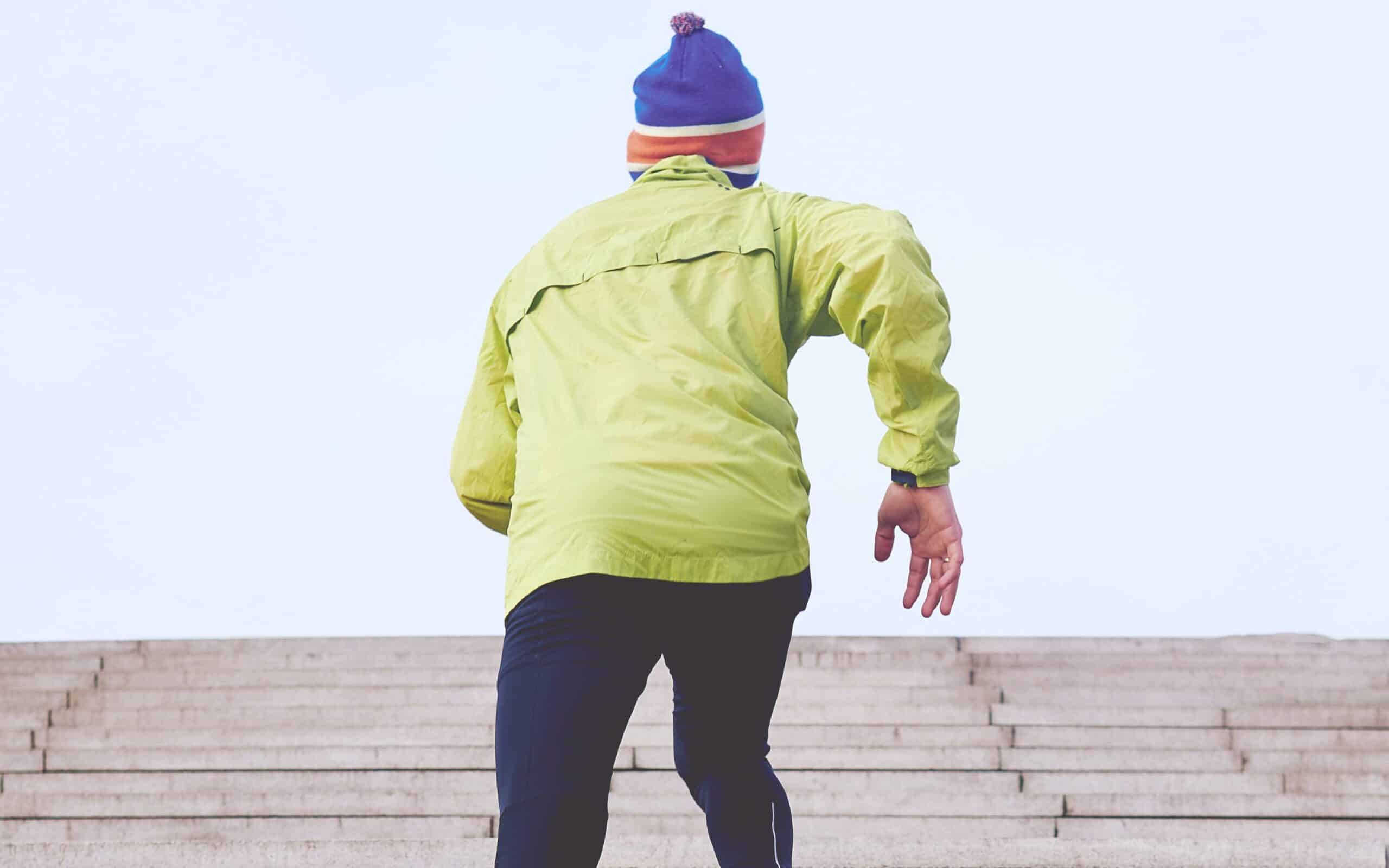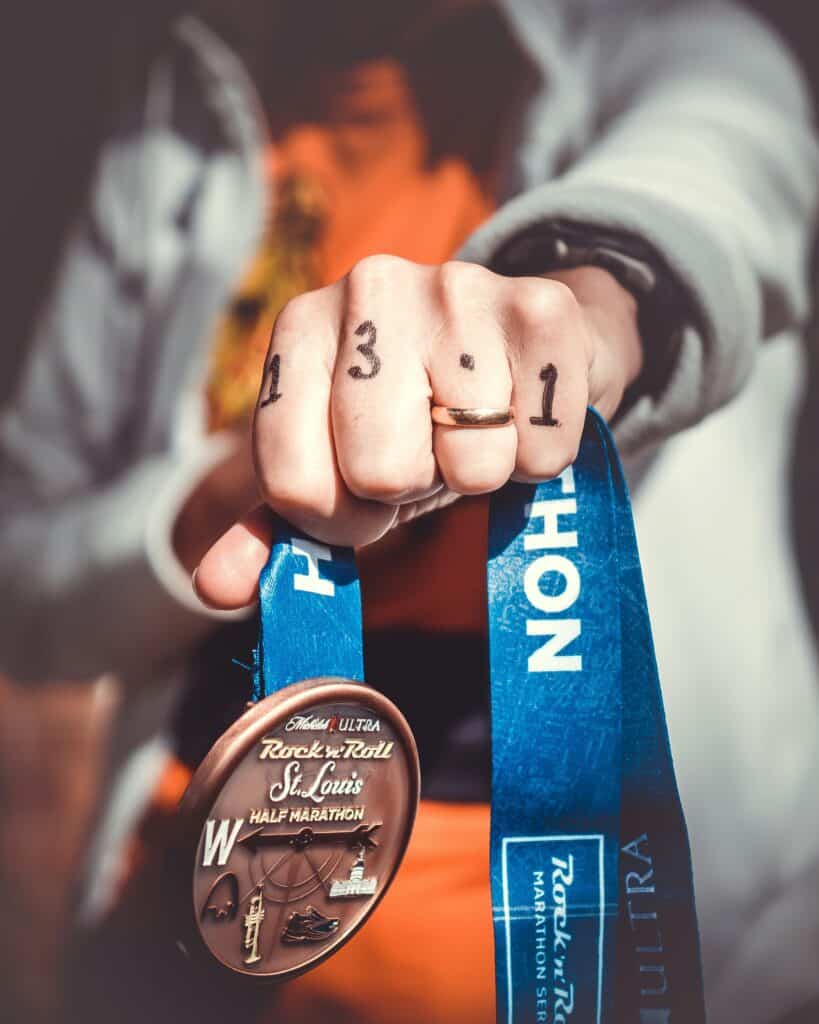Running seems rather simple. It’s just the repeated motion of falling forward with your foot pushing you up, right? Well, there’s actually a bit more to it than that. How does form impact running posture? Should I be worried if I’m a heel striker? Will running make me taller?
Every runner has their own unique running mechanics based on personal strength, flexibility, and body composition. However, there are some universal principles that will lead to good running form and make you a more efficient runner.
In this article, we’ll cover why your running form matters, how to achieve proper running posture, and ways to correct common posture issues. We’ll also answer the popular question- does running actually improve your posture?

The Importance of Your Running Form
While some claim that mastering running form is only important for elite athletes, learning proper running posture is incredibly beneficial to all runners – even new runners!
If you’ve ever woken up with a stiff neck or shin splints after a run, you know firsthand that your running posture has a significant effect on your body.
Not only that, but it also greatly impacts your running performance and your ability to continue running optimally – build endurance and stay injury free.
There’s a few other reasons why you should focus on running form and running posture.
First, proper running form will allow you to reduce overuse injuries and fatigue.
And secondly, improving your running technique will help you conserve energy to run a faster half marathon.
There are several common posture issues that cause runners to waste energy. By learning to run properly, you’ll improve your running economy, which is the amount of oxygen your body consumes to maintain a given speed. In doing so, you’ll be able to run more efficiently which will help you improve your speed and performance.
Simply put, the better your form, the easier running will feel.
What is Proper Running Posture and Form?
Now that you know why running posture matters, here’s a break down what each body part should be doing to help you achieve perfect running form.
Upper Body Running Posture
Spoiler alert- your legs aren’t the only important part of your running form. From your head to your toes, each body part contributes to how efficient your running is. So let’s start from the top!
Head
Here are the basics of how your head should be incorporated into proper running posture:
- Your head should always stay looking forward.
- Don’t run with your head looking down at the road or up at the sky.
- Focus on keeping your ears aligned with your shoulders.
- As your head is heavy, if it’s jutting too far forward, it will pull your shoulder and upper back forward as well. This will negatively impact multiple parts of your running form and create tension in your neck and shoulders.
- Therefore, it’s important to keep your head looking straight ahead, even if your eyes need to glance down to check the terrain.
Shoulders
Here are the basics of what to keep in mind with your shoulders when it comes to proper running form:
- Most people spend a lot of their days hunched over at a desk, but it’s important to make a conscious effort not to slouch your shoulders while running.
- Your shoulders should be rolled back, and your chest should be open.
- At the same time, your shoulders should feel relaxed, not tense.
- As someone who has personally struggled with neck pain from running, I learned the hard way that it’s super important to shake out your arms, shrug your shoulders, and loosen up your upper body periodically during your runs.
Arms and Hands
Here are the basics of arm and hand mechanics when it comes to proper running form:
- Your arms should be bent at a 90-degree angle with your elbows close to your side while running.
- As you drive your arms and your elbows backward and swing forward, the momentum will help propel your body forward.
- These quick arm movements help improve running cadence and promote longer strides.
- Make sure that your hands are relaxed while running and that you’re not squeezing them tightly and causing tension.
- Also, check that your thumbs stay facing the sky.
Core Running Posture
Here are the basics of how to engage your core when it comes to proper running posture:
- You’ve probably heard people say to run tall before, but what does that really mean?
- Imagine that you have a string attached to your head that is pulling you up.
- The resulting position is a long, tall spine, and that’s how your back should look while running.
- You don’t want to run in such a stiff, upright position that you’re perpendicular to the ground.
- Instead, there should be a slight forward lean in your posture that comes from your ankles.
- In the proper position, your body will look like a slightly diagonal line.
Lower Body Running Form
Many people struggle with running injuries that affect their lower body. Here are some useful tips about how the lower body should look to improve your running posture and avoid injuries.
Knees
- Your knees should remain slightly bent and in line with the middle of your feet.
- Considering the diagonal position from the forward lean that we previously discussed, your knee should land slightly in front of your hips.
- Make sure that you keep your knees down low.
- When you drive your knees too high, you waste energy and have a bouncy stride that puts excess stress on your body.
Legs and Ankles
- Use your back leg to push off the ground and propel yourself forward.
- While pushing, lift your back leg’s heel off the ground to assist with the next forward swing.
- Work on developing a slight forward lean by bending your ankles forward at approximately a 10-degree angle.
- This requires strong quads and glutes, so make sure you are performing strength training exercises for these areas as well.
Feet
- You should be using your feet to push yourself up off the ground.
- It’s not enough to just lift your feet, and you should always avoid dragging your feet beneath you.
- With each stride you take during a run, your feet hit the ground and absorb the shock from the impact. Therefore, it’s important to consider foot positioning and your landing mechanisms.
There are three different foot strikes- forefoot running (toe running), midfoot running, and heel striking. Each landing mechanism has advantages and disadvantages, and there are proponents for each style of landing.
Here’s a quick summary of the main pros and cons of each foot strike style:
- Forefoot running enhances forward momentum and puts less stress on the knees, but it can lead to excessive bouncing which can be less efficient.
- Midfoot running helps with shock absorption and reduces joint impact, but it can increase the risk of foot, ankle, and Achilles tendon injuries.
- Heel striking often feels most natural to runners and can strengthen the ankles and calf muscles, but it may cause more stress in your lower legs and it often leads to overstriding, which can cause knee pain and hip injuries.
Because each style has benefits and drawbacks, there’s really no right answer to which landing mechanism is best. However, if you feel that your foot strike is negatively affecting your performance or causing injuries, it’s probably time to switch it up.

How to determine your foot strike pattern
Here’s the best way to determine your foot strike pattern at home:
- Record a video of yourself running at different speeds.
- Rewatch the video in slow-motion video of yourself running several strides, and check which part of your foot lands first.
- This will allow you to take a closer look at your running form and assess if any changes are needed with your foot strike.
It’s also important to understand your foot strike pattern before purchasing running shoes. A supportive pair of running shoes can help reduce form issues related to your feet.
Speed vs. Distance Running Form Differences
While there are elements of running posture that are important to both speed and distance runners, there are also a couple of form differences to consider.
First, the proper foot strike pattern differs based on the type of running that you’re doing.
Typically sprinters strike with the forefoot (toes) while long-distance runners tend to heel strike. Although landing on your toes is okay for short bursts of sprinting, it can lead to shin splints during long-distance runs. Your feet should land closer to your heels during slower, long runs.
Additionally, the slight forward lean is more important to speed runners than distance runners. Imagine a sprinter leaning forward out of the blocks while accelerating through the starting line. This position is crucial to building forward momentum. However, distance runners don’t require that same intense speed, and therefore, they don’t need to focus on leaning as much.
Common Running Posture and Form Issues and How to Correct Them
Mastering proper form can feel intimidating, but we’re here to help!
In this section, we’ll explain some common running posture issues and share tips and drills to help you achieve the correct running form.
Overstriding
Overstriding is an issue that occurs when your front leg and knee land too far in front of your body.
There may be a variety of reasons for overstriding, but one common issue is that you may be running with too low a cadence. That means you’re taking too few steps per minute.
For proper form, it’s recommended that runners take 172-180 steps per minute.
If you dip below 172 steps per minute, you might struggle with overstriding.
This is because when you take fewer steps, you’re likely taking longer strides to overcompensate. In turn, you extend your front leg too far in front of your hips to cover more distance over fewer steps.
Overstriding is bad because it causes knee pain, puts more stress on your bones and joints, and increases the risk of injury.
Increasing your running cadence will help you avoid overstriding. To measure your running cadence, you can use a watch, like the Garmin or Apple Watch, or a tracking app, such as RunCadence.

Drills to correct overstriding:
- Uphill intervals: Short, intense uphill sprints meant to strengthen glute power on inclines.
- A-skips: A-skips involve a high knee skipping motion and encourages strict downward foot placement.
- Glute Activation Exercises: Exercises like glute bridges support the auxiliary muscles which stabilize the knee while running.
Heel Striking
As we mentioned before, if your foot strike does not cause you any issues, you probably don’t need to worry about it. However, if you’ve noticed that you heel strike and you’re experiencing knee pain or knee-related injuries, it’s time to shift to a midfoot strike or forefoot strike.
To do so, focus on purposefully landing on the center of your foot when you run. Again, you can record a slow-motion video of yourself running to check that you’re not landing on your heels.
Drills to correct heel striking: Marching, high knees, and skipping
Rounding Your Shoulders
Many people struggle with rounded shoulders while running because we spend so much time sitting and looking down at our phones and computers these days. Running with rounded shoulders can cause neck and back pain. It can also cause over-rotated arm swings, which reduces running efficiency.
While running, try to imagine that you’re holding a pencil between your shoulder blades. That pulled-back position will help you avoid rounding your shoulders.
Drills to correct rounded shoulders: Seated cable rows, dumbbell rows, doorway stretching, and cat/cow pose stretching
Does Running Improve Posture?
It’s time to finally answer the long-awaited question. Yes, running can help improve your posture!
Since running engages your core and the muscles around your pelvis, such as your glutes, it helps strengthen these areas. By building core strength, we can prevent hunching and delay bone weakening which negatively affects your posture. Therefore, running can contribute to better posture!
However, having good posture while running is another important part of this equation. Focusing on proper form while running will help you avoid any injuries that could contribute to your bad posture, such as lower back pain.
It’s also important to focus on strength training exercises in combination with running to further target and strengthen your postural muscles.
Related: Does Strength Training Improve Running Efficiency?
Our Final Thoughts
Fixing your running posture might seem intimidating, but try to take it a step at a time. Focus on one body part each week and make gradual changes.
For additional support, we highly recommend that you hire a running coach to give you personalized advice. If you’ve already suffered from a running injury, consult with a licensed physical therapist for help with your recovery and for additional running form tips to prevent further injury.
If you’re looking for video references and resources, this video from YouTuber and Running coach James Dunne titled PERFECT RUNNING FORM and Fabian Hornstein’s Instagram @fabi_horni_tri both include great video breakdowns of running form as well as drills.
Stretching is also essential to your running posture. For some amazing stretches for runners, check out this article!





